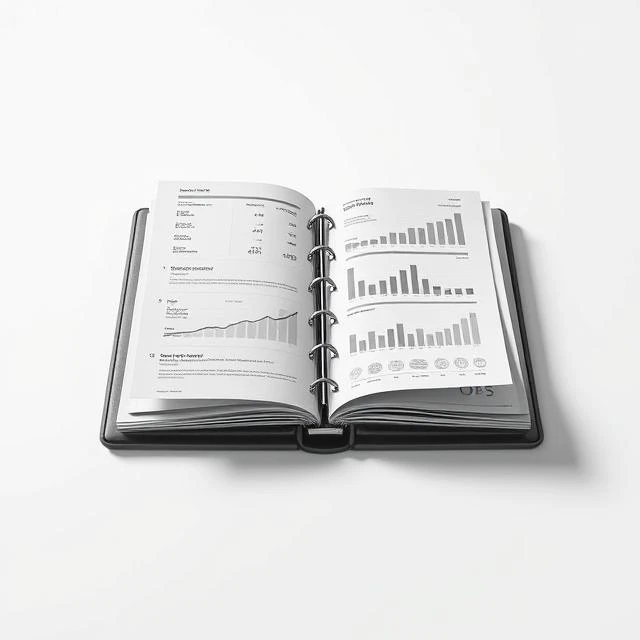Have you ever wondered how people seem to make their money work for them instead of the other way around? Investing is like a secret sauce that can help transform everyday savings into something much more substantial. Many are intrigued by the world of investments but don’t know where to start. It’s time to demystify the process and learn how to build an essential investment portfolio. When you think about your financial future, understanding and creating a solid investment portfolio can be your ticket to financial freedom. Let’s dive in and make investing a little less intimidating and a lot more accessible.
Understanding the Basics of an Investment Portfolio

First things first: what exactly is an investment portfolio? Simply put, it’s a collection of financial assets that you own, including stocks, bonds, real estate, and cash. The purpose of having a diversified portfolio is to manage risk while aiming for returns. A well-balanced portfolio should align with your financial goals, risk tolerance, and time horizon.
| Asset Type | Risk Level | Typical Return |
|---|---|---|
| Stocks | High | 8-10% |
| Bonds | Low to Medium | 3-5% |
| Real Estate | Medium | 4-8% |
| Cash | Very Low | 0-1% |
A portfolio doesn’t have to be overly complex. It’s about selecting a mix of assets that fit your financial profile. The idea is to spread out risk; if one asset class doesn’t perform well, another might do better, balancing things out.
Setting Clear Financial Goals
Before you start picking out investments, you’ve got to get crystal clear on your financial goals. Are you saving for a down payment on a house, building up your retirement fund, or maybe you have your eyes on early retirement? Goals will shape your investment strategy.
Start by defining short-term and long-term objectives. Short-term goals might be accomplished in five years, such as saving for a wedding or a big trip. Long-term goals can stretch over decades, like retirement planning. Your goals will dictate the types of investments that make sense for you.
Understanding the importance of time horizon cannot be overstated. The longer your investment timeline, the more risk you can typically afford to take, as it allows you to ride out volatility in the market.
Picking Your Investment Mix
Here’s where things get exciting—or overwhelming, depending on your perspective!
“Investing should be more like watching paint dry or watching grass grow. If you want excitement, take $800 and go to Las Vegas.”
Choosing the right investment mix means deciding how to allocate your assets among different types like stocks, bonds, real estate, and cash. Stocks are fantastic for growth, though they carry higher risks. Bonds offer stability and income but usually provide lower returns. Real estate can be a great hedging tool against inflation but requires a significant upfront commitment. Cash is king for liquidity but typically offers the lowest returns. Each asset class serves a different purpose, so a balanced mix is key.
When building a portfolio, many experts recommend the 60/40 rule (60% stocks, 40% bonds) as a starting point, especially for those in it for the long haul. However, this is not a one-size-fits-all rule. Your mix should reflect your personal risk tolerance and financial goals.
Diversification: Don’t Put All Your Eggs in One Basket

You’ve probably heard the saying, “Don’t put all your eggs in one basket.” When it comes to investing, this advice is golden. Diversification involves spreading your investments across various asset types to reduce risk.
If you’re heavily invested in a single stock or sector, your portfolio could suffer significantly if that area underperforms. By holding a range of investment types, you’re better protected against losses because not all asset types will fall or rise in value simultaneously.
Managing Risk and Reward
Risk and reward are two sides of the same coin in the investment world. Understanding your risk tolerance is crucial—it’s your ability and willingness to face volatility without losing sleep. Some investors can handle the highs and lows of the stock market with ease, while others prefer stability.
1- Assess your comfort level with losing—or gaining—money.
2- Consider your financial situation: Can you afford to take risks?
3- Remember that higher potential returns often come with higher risks.
By understanding your risk tolerance, you can select investments that won’t keep you awake at night, giving you peace of mind and potential financial growth.
Rebalancing Your Portfolio

Over time, the asset allocation in your portfolio may drift from your target allocation due to differing returns among asset classes. This is where rebalancing comes in. It involves buying and selling portions of your investments to maintain your original asset allocation.
Regular rebalancing is crucial for managing risk and ensuring that your portfolio stays aligned with your financial goals. For example, if stocks had an excellent year, your originally planned 60/40 stock-to-bond ratio might shift to 70/30, making your portfolio riskier than intended. Rebalancing involves selling some of the winning stock positions and buying more bonds to bring the portfolio back in line.
The Role of Professional Guidance
For those who feel overwhelmed or don’t have the time to manage their portfolio, professional guidance can be a game-changer. Financial advisors provide expertise and can help you design and maintain a portfolio that aligns with your financial goals.
The benefits of hiring a financial advisor include personalized advice, extensive market knowledge, and emotional discipline—they can keep you from making impulsive decisions when the markets get turbulent. Remember, even the most seasoned investors can benefit from a second opinion.
FAQ – Commun Doubts
How often should I rebalance my portfolio?
Most experts recommend rebalancing your portfolio every six months to a year, or when your asset allocation shifts more than 5% from its target.
What’s a good age to start investing?
It’s best to start investing as early as possible, ideally in your 20s or 30s, to take advantage of compound interest over time.
Can I manage my investment portfolio myself?
Yes, you can, especially with the wealth of online resources and tools available today. However, professional guidance can be beneficial for those who are less experienced.
What if I’m not comfortable taking risks?
If you’re risk-averse, consider focusing more on bonds and other stable investments. Diversifying can also help manage risk.
Are there any tax implications I should be aware of?
Yes, selling investments at a profit can result in capital gains taxes. It’s essential to understand the tax implications of your investment decisions.
How much money do I need to start investing?
You can start investing with a small amount, even $50 a month. The key is to be consistent and increase your investments over time.
Conclusion
Building an essential investment portfolio doesn’t have to be daunting. At its core, investing is about setting yourself up for financial success. By understanding the basics, setting clear goals, picking the right investment mix, diversifying, managing risk, and rebalancing regularly, you’re well on your way to building a strong portfolio. Remember, it’s never too late to start investing, and there’s always room to learn and grow in this journey. With the right strategies and mindset, your investments can work for you, bringing you closer to the financial freedom you desire.


